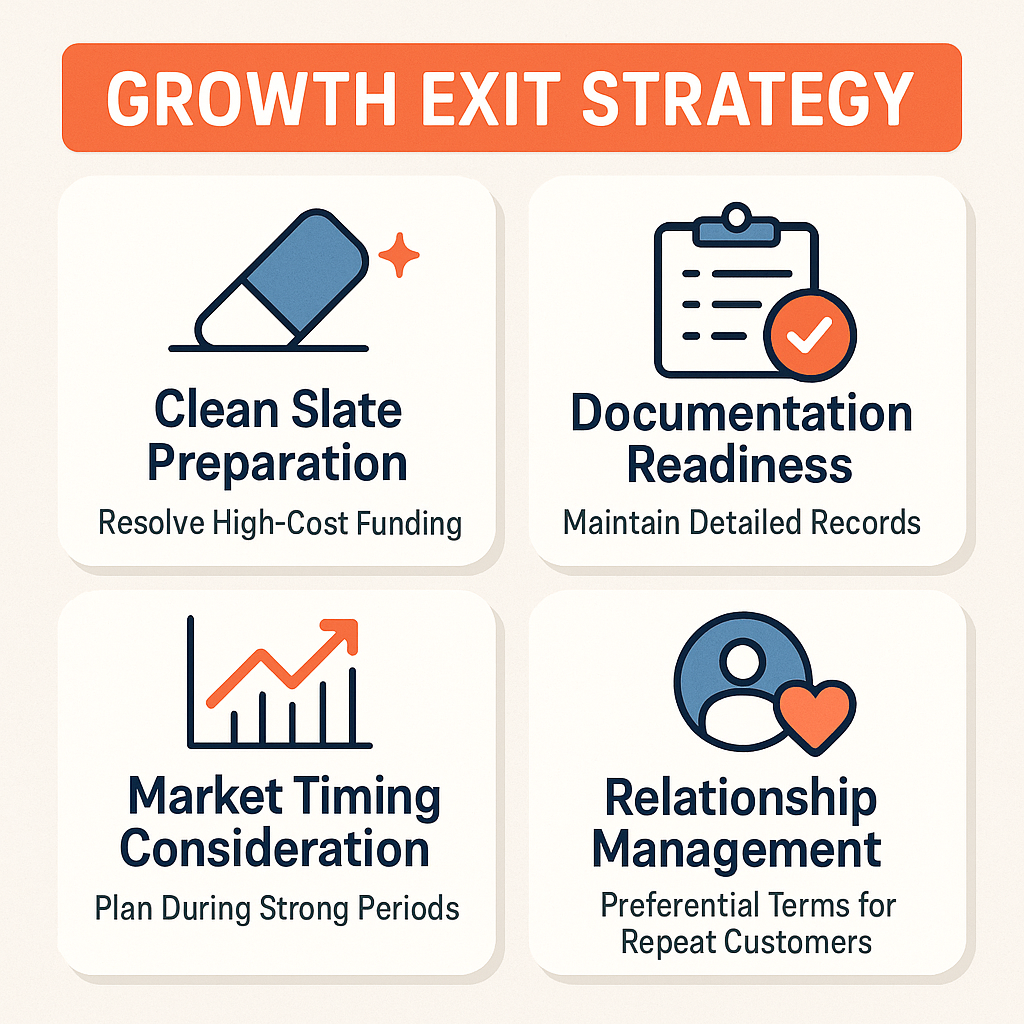The funding landscape has shifted dramatically in 2025, creating new challenges for businesses seeking to optimize their capital structure. With regulatory changes affecting refinancing options, smart exit strategies for funded businesses have become more critical than ever.
Understanding Your Current Debt Structure
Before exploring exit strategies for funded businesses, you need a clear picture of your existing obligations. Recent regulatory changes have made this assessment even more important for strategic planning.
- Map your debt stack: Document all funding sources, repayment terms, and renewal dates to identify potential conflicts or optimization opportunities
- Calculate true costs: Factor in all fees, holdbacks, and opportunity costs to understand which obligations might benefit from early resolution
- Assess regulatory impacts: New SBA rules prohibiting MCA refinancing may affect your available options for debt stack management
- Review contract terms: Understanding prepayment options, renewal clauses, and exit penalties helps you plan strategic moves
This foundation enables you to make informed decisions about which funding relationships to maintain, modify, or exit entirely. The regulatory environment continues evolving, so staying current on rule changes helps protect your strategic flexibility.
Strategic Paydown and Refinancing Options
With traditional refinancing paths narrowing, funded businesses must explore alternative approaches to capital structure optimization. The key lies in understanding which options remain viable under current regulations.
- Accelerated paydown strategies: Using strong cash flow periods to reduce high-cost obligations can improve your overall capital position and create breathing room
- Alternative refinancing sources: Since SBA programs no longer refinance MCAs, explore private lenders, credit unions, or alternative financing providers for debt consolidation
- Revenue-based restructuring: Some funders may negotiate modified terms or payment structures that better align with your business cycles
- Cross-collateralization planning: Understand how multiple funding arrangements interact and plan exits that don't trigger unwanted acceleration clauses
Timing these strategies requires careful coordination. Market conditions, seasonal business patterns, and cash flow projections all influence when to execute specific moves in your capital optimization plan.
Planning Your Growth Exit Strategy

A well-executed growth exit strategy positions your business for sustainable expansion while managing existing funding obligations. This approach requires balancing current commitments with future opportunities.
- Clean slate preparation: Plan to resolve short-term, high-cost funding before pursuing growth capital to improve your attractiveness to new funders
- Documentation readiness: Maintain detailed records of all funding relationships, performance metrics, and repayment history to demonstrate creditworthiness
- Market timing consideration: Regulatory changes may create temporary funding gaps, so plan transitions during strong operational periods when possible
- Relationship management: Some funders offer preferential terms for repeat customers, making strategic relationship maintenance part of your long-term capital strategy
The changing regulatory environment means businesses must be more proactive about exit planning. What worked in previous years might no longer be viable, making it essential to stay informed about evolving rules and market conditions that could affect your strategy.
Successfully navigating exit strategies for funded businesses requires adapting to new regulatory realities while maintaining focus on growth objectives. By understanding your debt structure, exploring available refinancing options, and planning strategic exits, you can optimize your capital position despite changing market conditions.

.png)






